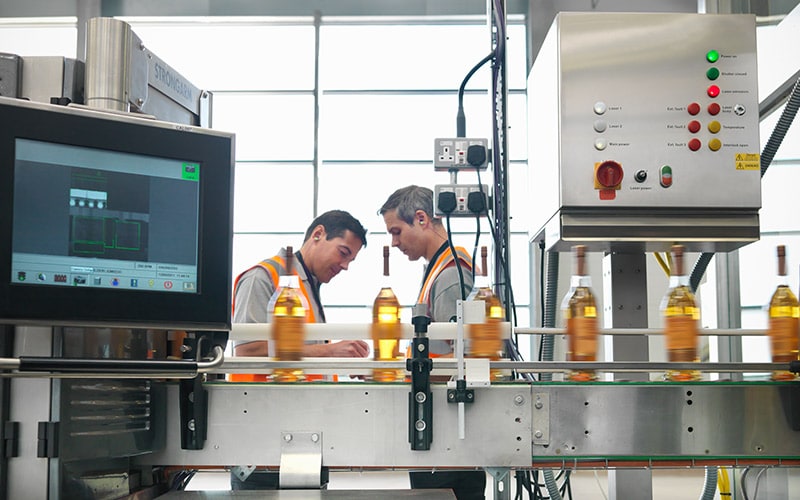
Insights
- More CPG companies are leveraging AI-driven systems to enhance agility in their demand and supply planning processes.
- Coca-Cola Hellenic implemented Blue Yonder to modernize its supply chain, facing some initial challenges with platform alignment to specific user-defined parameters, which Infosys helped resolve.
- Infosys worked closely with Coca-Cola Hellenic to fine-tune these parameters, train super users, and set up a CoE that aligns business needs with the platform’s functionalities.
Demand and supply planning is vital for CPG companies to manage seasonal trends, economic shifts, and customer needs, as well as to avoid overstocking or understocking. Many are moving away from traditional tools like Excel to autonomous technology that offers AI-driven insights to become more nimble.
“Organizations are moving toward this technology to create an end-to-end, integrated planning approach, standardize operational processes, and make data-driven decisions related to demand and supply, with minimum direct human oversight,” said Bhavna Sharma, principal consultant and program director for supply chain at Infosys, during a webinar discussing how Coca-Cola Hellenic transformed its supply chain.
Benefits of AI-enabled planning systems
Managing supply chains across diverse geographies and retail channels — whether e-commerce or in-store, involving both large and small brands — becomes increasingly complex, especially as the number of stock-keeping units (SKUs) grows. Humans by themselves can struggle to keep pace, whereas an AI-enabled planning system can analyze vast datasets and provide real-time demand and supply recommendations. Using it can simplify managing SKU-related complexities, such as frequent product changes and varying drop sizes — the volume of products delivered in a single shipment — allowing businesses to operate more efficiently. It also streamlines ecosystem orchestration by simplifying coordination with suppliers and vendors for different product components. Communication happens seamlessly on a unified platform, with real-time data updates, eliminating the need for manual document sharing through email.
However, addressing complexities such as plant age, capabilities, transportation routes, logistics providers, and warehouse management throws up different challenges for each organization, as every supply chain is unique. To ensure that these specific business nuances are accurately represented in the planning platform, companies need a system of differentiation that can understand and accommodate the unique moving parts of their specific supply chains and offer tailored recommendations.
Addressing complexities such as plant age, capabilities, transportation routes, logistics providers, and warehouse management throws up different challenges for each organization, as every supply chain is unique.
Coca-Cola Hellenic needed a system that would inject intelligence into its decision-making processes, improve customer service, optimize costs, and boost productivity. It chose Blue Yonder as its platform — but the project was not without its challenges.
Configuring this platform was trickier than expected, as Shalendra Kumar, head of digital enterprise platform at Coca-Cola Hellenic, explained. “We went about the design and configuration session, design workshop, fit gap analysis, and configuration to fit the solution into our business. We did thorough testing after configuration. Things were working fine technically, but during our first go-live, which involved business in a large business unit, in a large country, we faced significant challenges regarding the recommendations coming from the Blue Yonder solution because though technically the recommendations were right, they were not making business sense,” he said.
“We withdrew the go-live. When we analyzed the situation, we realized that Blue Yonder is an immensely powerful tool great at configuring the thinking which is in the mind of the supply planner (the user) into an algorithm. But all nuances of the thinking or user-defined parameters (UDPs) need to be captured aptly for optimal results.”

The differentiating factor and impact
Coca-Cola Hellenic decided to work with partners who had a track record of implementing similar platforms for other CPG companies, and chose Infosys for its experience in this area.
Infosys collaborated closely with the Coca-Cola Hellenic team to refine the UDPs, and carried out simulation trial runs. “It is much more effective to amend the UDPs that serve as input to the plan till you arrive at the right values than have to alter the plans that are produced as output,” said Sharma. “To help the Coca-Cola Hellenic team maintain user data easily and effectively, Infosys clubbed the parameters related to user roles such as production planner, haulage planner, raw material planner, and so on. For key users of the solution, also known as ‘super users’ or early adopters, the Infosys team organized training and training material to serve as a reference for users in the initial training phase. In the next phase, the early adopters became designated change ambassadors who would positively influence the change among newer users of the solution in other locations.”
Infosys set up a product-centric center of excellence (CoE), comprising industry experts, domain specialists, architects, data managers, program managers, and change managers. This CoE integrated the client’s business requirements with core product capabilities to ensure smooth rollouts and effective value realization.
Infosys set up a product-centric CoE, comprising industry experts, domain specialists, architects, data managers, program managers, and change managers.
It’s clear that having the right technology partner is a vital component for a CPG company’s transformation. “Now we have about 500 people in planning organizations in 29 countries. We have rolled out to more than 50% of business units. And now the implementation acceptance and value delivery have been smooth,” said Kumar.

Best practices for demand and supply planning
Successful adoption and rollout of a new solution depend on some underlying principles and decisions:
- Choose the right tech
Picking a planning solution that addresses the specific needs of the business is essential. AI-enabled cognitive planning solutions, which integrate and analyze data from multiple sources to provide actionable recommendations, can enhance forecasting and planning for organizations. - Gather high-quality data
High-quality data is essential for enabling an autonomous system to operate quickly and efficiently. Companies must have the expertise to identify and prepare this data as part of the transformation. The better the data, the more accurate the system's recommendations will be. - Deploy cross-functional teams
Assembling diverse teams from sales, marketing, supply chain, and finance brings together a range of perspectives, fostering richer insights. This collaborative approach ensures alignment in decisions and actions related to demand and supply planning, while preventing the confusion that can arise from siloed operations. - Partner with technology companies
The right technology partner will not only lead a successful deployment, it will also manage the entire digital transformation process. The technology partner will bring its extensive domain expertise to drive collaboration with business planners from the CPG company to identify and incorporate the organization’s specific nuances into the demand and supply planning platform. Additionally, the technology partner will assess the platform’s configurability and use its experience to ensure adherence to best practices. “Clients start this transformational journey based on their program vision, and an idea of improvement to their business key performance indicators (KPIs),” said Sharma. “While they understand the business objective, they require a partner with whom they can collaborate, who can bring in the best practices from industry experience with similar client organizations, and also highlight any potential pitfalls that can be avoided.” - Set up change management
Implementing a new platform is challenging, and the scale of change involved can be significant. This makes change management crucial, as it prepares companies to navigate the changes to their processes. It enables them to engage employees, increase awareness of the role the implementation will play in the business, and train them to use the new system effectively.
Rahul Ubgade, vice president, consumer goods, retail and logistics at Infosys, stressed this important requirement: “This shift requires some preparation and change management, including defining the KPIs and measurement criteria right from the start. The client leadership also plays a key role in such implementations because the external partner might take time to understand the specific nuances in the organization, but the client leadership can lead them to them quickly, creating a win-win partnership.”





